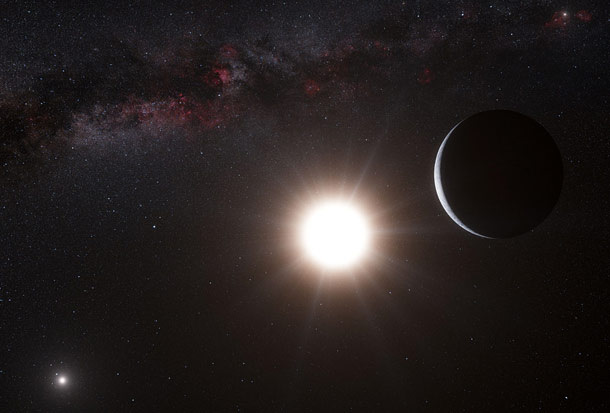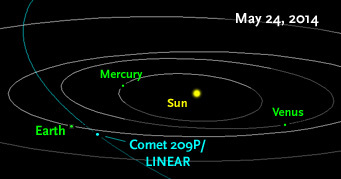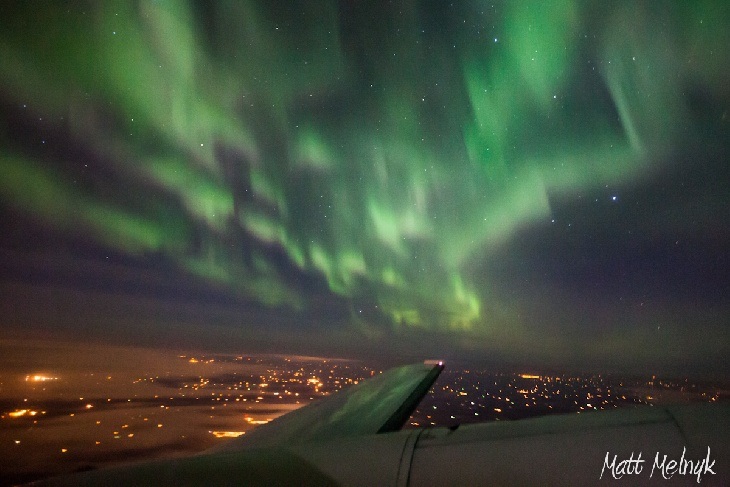From Bad Astronomy:
Astronomers have announced they have found a planet orbiting one of the stars making up the most famous star in the sky: Alpha Centauri, the closest star system to our own! At 4.3 light years distant, this is far and away the closest exoplanet known… and of course, it has to be.
Astronomers have announced they have found a planet orbiting one of the stars making up the most famous star in the sky: Alpha Centauri, the closest star system to our own! At 4.3 light years distant, this is far and away the closest exoplanet known… and of course, it has to be.
Alpha Centauri is triple-star system, composed of a binary star, two stars much like the Sun – one slightly larger and hotter, called Alpha Centauri A, and the other slightly smaller and cooler, called Alpha Centauri B – orbited themselves by a red dwarf (called Proxima Centauri) much farther out.
The planet orbits close in to Alpha Cen B, and is technically called Alpha Centauri Bb – planets have lower case letters assigned to them, starting at b. Its mass is only 1.13 times the Earth’s mass, making this one of the lower mass planets yet found! But don’t get your hopes up of visiting it – its period is only 3.24 days, meaning it must be only about 6 million kilometers (less than 4 million miles) from its star. Even though Alpha Cen B is a bit cooler than the Sun, this still means the planet is baking hot, far too hot to sustain any kind of life as we know it, or even liquid water.
Read the whole article here.
The planet orbits close in to Alpha Cen B, and is technically called Alpha Centauri Bb – planets have lower case letters assigned to them, starting at b. Its mass is only 1.13 times the Earth’s mass, making this one of the lower mass planets yet found! But don’t get your hopes up of visiting it – its period is only 3.24 days, meaning it must be only about 6 million kilometers (less than 4 million miles) from its star. Even though Alpha Cen B is a bit cooler than the Sun, this still means the planet is baking hot, far too hot to sustain any kind of life as we know it, or even liquid water.
Read the whole article here.



